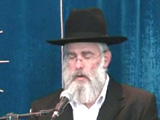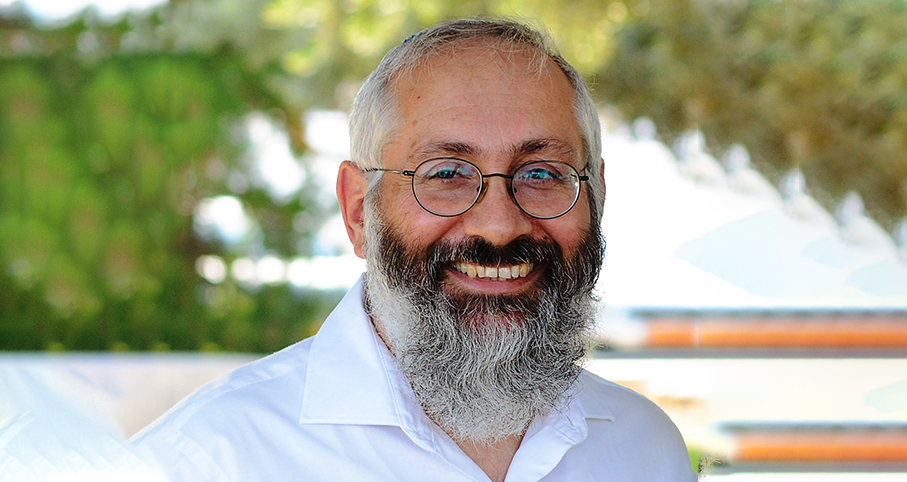Beit Midrash
- Shabbat and Holidays
- Purim & The Month of Adar
- The Month of Adar
The Torah study is dedicatedin the memory of
Rabbi Uzi Kalcheim
2. Common Contradiction
3. Vicissitudes of Life and Law
Three Herdsmen
The Talmud (Sanhedrin 18a) tells us of three herdsmen who managed to acquire an intimate understanding of nature and its inner workings. They sensed the changes and transformations at work in Adar, and they offered a number of signs to help us recognize this month. These signs are discernable as phenomena in nature. The sages availed themselves of these signs as supporting evidence only after they had reached clear conclusions via calculations based on Jewish tradition relating to the workings of the constellations.
The first herdsman said: "If the early and late sowing sprout together, the month is Adar; if not, it is not Adar."
In other words, if the soil is warm, and both the early and late seeds sprout at the same time, wheat sown on the first of the month and barley sown just now, this is a sign that it is Adar. And if not, it is not Adar - it is Shevat (based on Rashi).
Some interpret this to mean that if seeds sown during the first rain sprout together with seeds sown during the last rain, it is the season of Adar; and if not, it is not the season of Adar (based on responsum by Rabbi Sherira Gaon, Margaliot Hayam, ad loc.).
The second herdsman said, "If the morning frost is severe enough to injure an ox, and at mid-day the ox lies in the shade of the fig-tree and scratches its hide, then it is Adar, if not, it is not Adar."
If in the morning it is so cold that the cattle nearly die from the frost, and at noon it becomes so hot that they seek shade under the fig trees and scratch themselves against them, it is Adar (Rashi).
Some explain this sign as relating to the turtle-dove and nestling who take cover in the morning because of the frost and at noontime are unable to rise because of the heat, and instead seek shelter in the shade of the fig tree (Rabbi Sherira Gaon).
The third herdsman said, "When a strong east wind is blowing and your breath can prevail against it, the month is Adar; if not, it is not Adar."
If the strength of winter has weakened to the point that when a very strong east wind blows and brings cold air, one's breath prevails against the cold air and warms it, it is Adar (Rashi).
Common Contradiction
What can we learn from each of the signs given by these three herdsmen?
Each of them gives a sign relating to a different facet of nature. The first gives a sign relating to vegetation, the seeds sown earlier and later that sprout simultaneously in this month. Early sowing does not mean early sprouting. The second gives a sign relating to animals, cattle or bird, who suffer from both the morning cold and the noontime heat in the month of Adar. The third gives a sign relating to man, struggling with the cold east wind, trying to overcome it by exhaling his warm inner heat.
Although these signs relate to different layers of nature - vegetable, animal, man - it is possible to find a common denominator here that expresses the unique character of the month of Adar: it contains paradoxes and contradictions, or clashes and upheavals.
According to the normal order of things, seeds sown earlier sprout earlier. In Adar, however, the early and late sprout as one. This is because the earth has been cold throughout the winter; and now, with Adar's heat, both the earlier-sown and later-sown seeds begin to sprout.
The paradoxical nature of Adar also finds expression in the lives of the animals. Adar's fierce morning cold belongs to the winter, and the animals nearly freeze in the snow. They stop all activity and seek out warm shelter. At noontime, by contrast, the sun heats the earth as in the warm days of summer. Animals try to escape, as it were, from even themselves, to peel off their hides because of the heat. In the month of Adar, then, we find both the hibernation of life and its awakening.
What could be more paradoxical than this: the east wind, which is always hot and dry, in the month of Adar is cold; nonetheless, unlike the winter, when the warm air a person breathes out is unable to overcome the cold air outside, in the month of Adar man's warm inner breath overcomes the outer cold. The weather of Adar, then, combines both warmth and cold. Here, too, we have a clash - a clash between the internal and external.
Vicissitudes of Life and Law
Adar's unique character finds expression not only in the contradictions and opposing forces of nature, but also in the life events of Jewish history. It is no coincidence that the Purim festival occurs in this of all months. The miracle of Purim that manifested itself in Adar did so in keeping with the paradoxical nature of this month.
Haman's casting of lots, which appears absolutely random, turns out to be guided by Divine Providence. In the Scroll of Ester, all of Haman's scheming against Israel was reversed, turning upon Haman himself. Haman was of the impression that this month, the month in which Moses died, was an unpropitious time for Israel, and he thought that this would be the perfect time for carrying out his evil schemes. His mistake was that he did not realize that Moses was also born in this month.
Among Adar's unique traits is the fact that it contains opportunities for new beginnings, for the season of spring. It also contains opportunities for conclusions, the end of the winter season. Therefore, we find in this month both life and death, beginning and end. Birth and life on the one hand, loss and destruction on the other. Delight and joy for the seed of the Jews, disgrace and grief for the seed of Amalek. Both sides of the coin come up in this month. Haman's good fortune was transformed into death and mourning, and the Jewish people enjoyed the salvation of life, joy and peace.
A lesser-known event that took place in Adar, and one that befits the diverse nature of this month, is the dispute between the schools of Hillel and Shammai: "They decreed a fast on the ninth of Adar because the schools of Shammai and Hillel disputed one another (Tur-Shulchan Arukh, Orach Chaim, 580).
This is the first dispute regarding which it is said "Both are the words of the living God," for the various aspects of existence and the opposing trends in Jewish law are rooted in this month. Physical existence has various aspects, and each school of thought emphasizes a different aspect, even though a halakhic ruling is by definition a decision regarding a most essential matter of existence (based on Maharal, Be'er HaGolah 1).

Happiness and Hiddenness
Rabbi Stewart Weiss | Adar II 6 5782
5. The Mitzva to Wipe Out Amalek
Chapter 14: The Month of Adar
Rabbi Eliezer Melamed | Kislev 12 5782
























